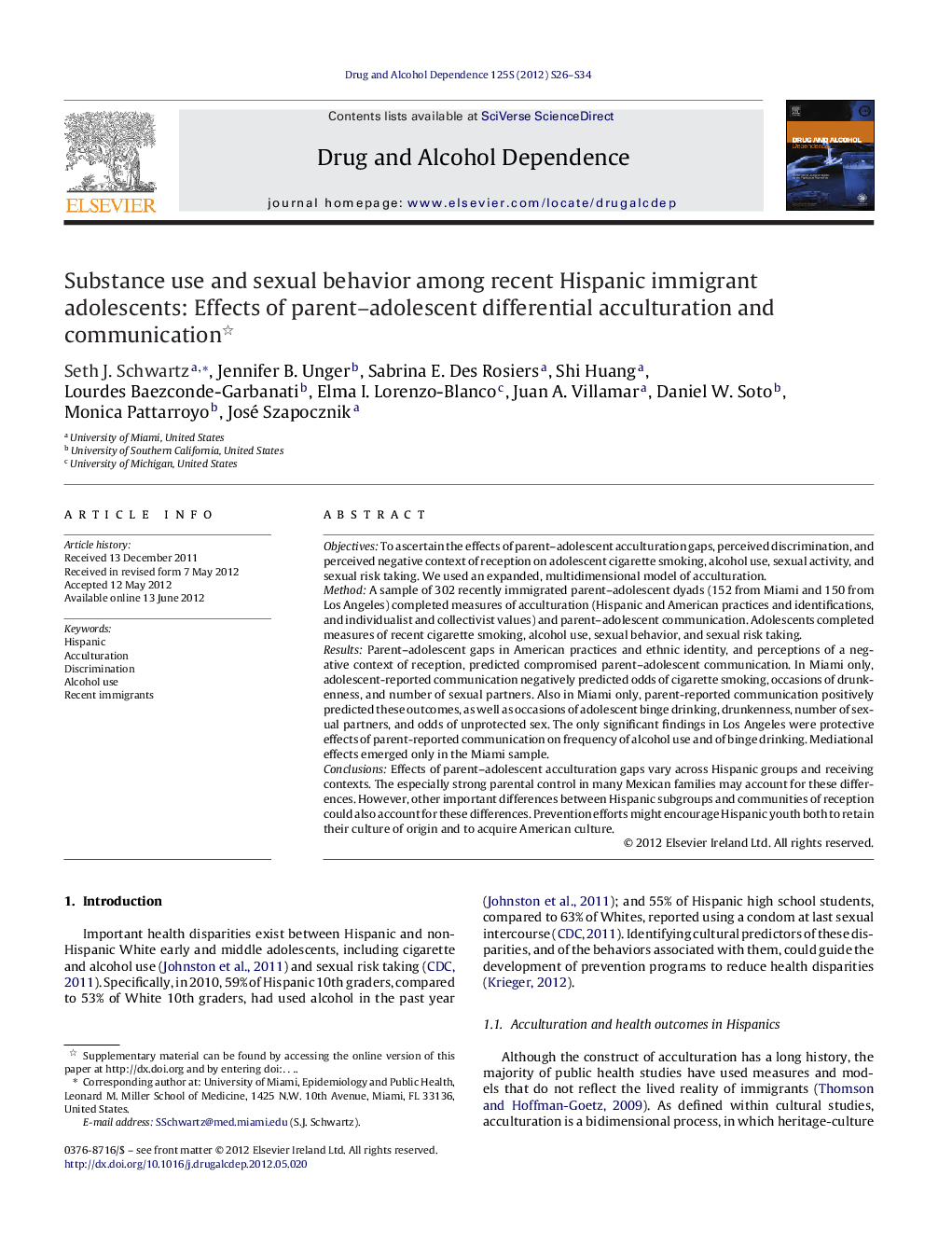| کد مقاله | کد نشریه | سال انتشار | مقاله انگلیسی | نسخه تمام متن |
|---|---|---|---|---|
| 1070109 | 949331 | 2012 | 9 صفحه PDF | دانلود رایگان |

ObjectivesTo ascertain the effects of parent–adolescent acculturation gaps, perceived discrimination, and perceived negative context of reception on adolescent cigarette smoking, alcohol use, sexual activity, and sexual risk taking. We used an expanded, multidimensional model of acculturation.MethodA sample of 302 recently immigrated parent–adolescent dyads (152 from Miami and 150 from Los Angeles) completed measures of acculturation (Hispanic and American practices and identifications, and individualist and collectivist values) and parent–adolescent communication. Adolescents completed measures of recent cigarette smoking, alcohol use, sexual behavior, and sexual risk taking.ResultsParent–adolescent gaps in American practices and ethnic identity, and perceptions of a negative context of reception, predicted compromised parent–adolescent communication. In Miami only, adolescent-reported communication negatively predicted odds of cigarette smoking, occasions of drunkenness, and number of sexual partners. Also in Miami only, parent-reported communication positively predicted these outcomes, as well as occasions of adolescent binge drinking, drunkenness, number of sexual partners, and odds of unprotected sex. The only significant findings in Los Angeles were protective effects of parent-reported communication on frequency of alcohol use and of binge drinking. Mediational effects emerged only in the Miami sample.ConclusionsEffects of parent–adolescent acculturation gaps vary across Hispanic groups and receiving contexts. The especially strong parental control in many Mexican families may account for these differences. However, other important differences between Hispanic subgroups and communities of reception could also account for these differences. Prevention efforts might encourage Hispanic youth both to retain their culture of origin and to acquire American culture.
Journal: Drug and Alcohol Dependence - Volume 125, Supplement 1, September 2012, Pages S26–S34